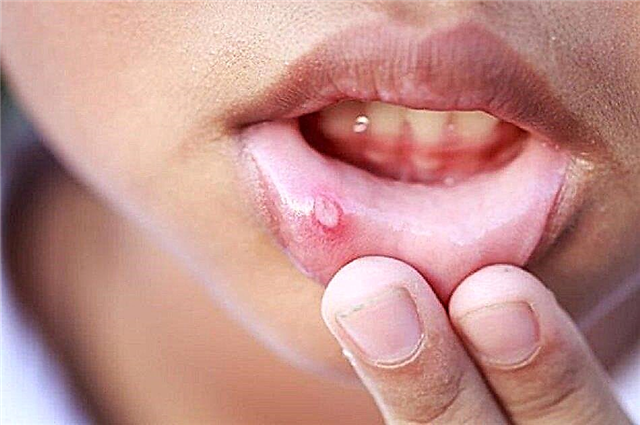Diseases of an allergic nature are the scourge of the XXI century. In babies, the immune system is not yet fully formed, so their body is most sensitive to the effects of allergens. Scientists claim that every second inhabitant of our planet will experience allergic reactions in 20-30 years. Many parents are interested in why an allergy occurs in infants and what it looks like. The answers to these and other questions will be presented below in the article.

Child allergy to insect bites
Allergic rashes in newborns
The allergic reaction of the child's body is caused by its increased sensitivity to the effects of a wide variety of exo and endogenous factors. At the same time, the child's immunity can give its negative response to a variety of substances.
Allergies in newborns with breastfeeding are recorded much less often than in children who are given artificial formula. If an infant who is on HBV develops an allergy, the mother should in no case stop breastfeeding the baby. On the contrary, maintain lactation as long as possible. After all, only mother's breast milk has unique properties. Considering that the baby is sprinkled, the mother needs to adhere to a certain diet.
How does allergy manifest?
To prevent the appearance of allergies on the skin of a child in the future, you need to find out the symptoms of the disease. Most babies are affected by the skin. You can find out about what an allergy looks like in a newborn from your local pediatrician. As a rule, allergic rashes in a child appear all over the body, most often they are localized in the neck, face, buttocks and forearms. Due to the constant itching, babies are constantly naughty, sleep poorly, often cry and refuse food.
In parallel with rashes, dysfunction of the digestive system is diagnosed in infants. If the allergen is in the air, the typical red spots on the body of newborns may not be.
Types of skin rashes
Specialists distinguish several types of allergies in an infant:
- Exudative diathesis. Most often it is diagnosed on the cheeks. Skin redness and severe peeling are observed. Scabs form in the scalp.
- Milk crust is the formation of small, oozing plaques on the forehead, cheeks, chest and buttocks.
- Seborrhea - the formation of crusts and scales is observed in the scalp and in the eyebrows.
- Diaper rash. Most often they are localized behind the ears, armpits and in the groin area.
Note. A rash in a baby does not always mean that the child's body is exposed to an allergen.
Differential diagnosis
Infant skin rashes can have different etiologies, therefore, in order to make an accurate diagnosis, you need to be able to distinguish allergies from other pathologies. For example, during the period of the so-called flowering, the baby may have small millet spots of a red-pink hue. The etiology of these rashes is associated with hormonal imbalance in the child. Such a rash may not cover a specific area, as in allergic reactions, but almost the entire surface of the body.
Many parents often confuse common prickly heat with allergies. It manifests itself not in rashes, but in red spots that are associated with diaper rash.

Allergies in babies should not be left without medical attention.
Important! Food allergies are most commonly caused by nuts, peanuts, red berries, chicken, eggs, seafood and cheese.
How to identify an allergen
In case of detecting allergy symptoms in a baby, you need to contact an allergist. Only he can tell why the newborn has an allergy. With the help of modern diagnostic methods, everyone can check in a short time if they are allergic to one or another allergen or not. To begin with, experts recommend a complete blood count.
Blood is donated in the morning on an empty stomach, while the last meal should be 12 hours before the study. The presence of an allergy may be indicated by an increased content of eosinophils in the blood. To diagnose allergies, you also need to be tested for immunoglobulin E (specific immunoreactive protein). In physiologically healthy children, this substance is contained in a minimum concentration. In the presence of allergic reactions in the body, this indicator increases several times.
Skin tests can be considered a visual way to establish deviations. The allergist uses a special tool to form small scratches on the skin of the hand. Further, preparations are applied to the surface, which include allergens. You can read the reaction in 15-20 minutes. With a positive reaction, slight swelling and redness appear at the injection site of the allergen.
It should be noted! A laboratory blood test for allergens is the best method for diagnosing allergies in a child. Through this method, antibodies to different types of allergens can be detected in the baby's body. During the determination of the results, all totals and their values are taken into account. To identify allergies to foods, for example, lactose or gluten, a hemotest is performed.

Allergic reaction in a child to household chemicals
Difficulties in diagnosing allergies
It is quite difficult to find out the type of allergen that triggered the development of allergic reactions in the baby's body. The thing is that hundreds of different substances cause allergies. Moreover, the list of the most common allergens differs from country to country, from region to region, and even in different social groups it is different. Allergists divide all allergens into groups, the so-called allergic panels.
There are 4 main allergy panels commonly used:
- Inhalation: pollen of alder, hazel, birch catkins, wormwood, plantain, soybeans, particles of hair and skin of cats, dogs, horses, hamsters, guinea pigs, rabbits.
- Food grade: peanuts, chicken yolk and protein, hazelnuts, potatoes, walnuts, milk, celery, almonds, casein, carrots, tomatoes, orange, crab, apple, cod, soy, sesame, wheat and rye flour.
- Pediatric: Pet epithelium, fungus, birch pollen, milk, house dust mites, hazelnut, etc.
- Combined: major inhalation and food allergens.
Council. Before treating an allergy, you need to understand the root cause of it.
Major allergens in children
The list of substances that can cause allergic reactions in both children and adults is quite large. There are a lot of potentially dangerous compounds around us. Many of them appeared due to the development of civilization. However, this does not mean at all that allergens are exclusively products of the chemical industry and compounds artificially created by man. Many allergens are present in natural materials and biological objects.
Allergy to insect bites
Allergy to mosquito bites in medicine is called kulicidosis. This disease can be recognized by the following symptoms:
- severe itching;
- swelling and hyperemia near the bite site;
- blistering;
- a sharp deterioration in general health;
- nausea;
- vomiting;
- tachycardia;
- lowering blood pressure;
- sometimes there are attacks of suffocation;
- anaphylactic shock and Quincke's edema occur in extremely difficult cases.
Note. Severe manifestations are more likely with bites from a large number of insects, as well as in people prone to allergies. In this case, only a specialist can quickly cure a person.
Allergy to drugs
Allergy to drugs is not uncommon. The danger of this condition lies in the fact that the disease may not manifest itself immediately, but as the allergen accumulates in the body. If the patient is allergic to any drug, then, most likely, he will develop negative effects after the use of other medications, which also contain an already known irritant. Often, the etiology of drug allergies is associated with antibiotics (penicillin, tetracycline, chloramphenicol, sulfa drugs, local anesthetics) and vaccines.
The reaction to mantu (tuberculin) occurs instantly. It is very often confused with a cold, shortness of breath, or prickly heat. An allergic reaction to vaccination is manifested as follows:
- hyperthermia;
- rash on the skin;
- hives;
- rapid fatigue and loss of appetite;
- anaphylaxis.
The rash can be observed not only in the place where the injection was made. Blisters often occur in the groin, under the knees, on the face, elbows, and on the buttocks. Allergies are also accompanied by swollen lymph nodes, swelling, itching and pain.

Biochemical blood test is the most accurate method for detecting allergens in the body
Council. If a child is allergic to mantu, it should be shown to an allergist or immunologist.
Contact
Contact allergy is often diagnosed in babies; its etiology is usually associated with poor-quality detergents. There are many types of household chemicals on sale, differing in manufacturer, price and composition. As a rule, their components are basically the same, with the exception of special products that are classified as hypoallergenic. Most often, allergies are caused by fragrances, phosphates, bleaching agents. They are dangerous because they remain on things after washing and are not removed from them even after rinsing.
With contact allergies, a child may experience the following symptoms:
- conjunctivitis;
- photophobia, lacrimation;
- a nodular rash;
- itching;
- swelling of the skin;
- rhinitis;
- cough;
- discharge from the nose.
Food allergies in babies
Allergy in breastfed babies most often occurs not to the mother's milk itself, but to allergens that have penetrated it with the food she uses. Therefore, the first step is to adjust the mother's diet.
Potential allergens include the following foods:
- nuts;
- chicken eggs;
- cow or goat milk;
- butter;
- cauliflower;
- citrus fruit;
- seafood and some types of fish;
- mushrooms;
- honey.
In addition, if the baby is allergic, the mother should give up sweets and fried foods. Despite all the restrictions, the mother's diet should have a sufficient amount of minerals (calcium, magnesium, phosphorus, zinc, iron, copper, etc.), vitamins, carbohydrates, proteins, lipids and other nutrients that contribute to lactation.
Nutritionists recommend replacing traditional food allergens with the following foods:
- fermented milk products (cottage cheese, kefir);
- cereals and soups (buckwheat, rice, corn);
- vegetables and fruits (zucchini, cabbage, apples);
- beef;
- lean pork;
- rabbit;
- turkey meat;
- tea;
- Rye bread;
- still water;
- uzvar.

When introducing complementary foods into the baby's diet, sometimes there are problems with allergies.
More often than other symptoms in infants, allergies are manifested by skin reactions in the form of all kinds of rashes, often with itching, dryness and peeling of the skin, diaper rash, urticaria, hyperemia, prickly heat. In the absence of therapy, disorders of the gastrointestinal tract join the symptoms of allergy: regurgitation, vomiting, constipation or indigestion, bloating and increased gas formation.
Seasonal allergies
This type of allergy is recorded in the spring and summer. An allergen in this case is plant pollen, when it gets on the mucous membranes of which they react with inflammation. Inflammation of the mucous membranes of the nose is manifested by a runny nose, sore throat, sneezing, burning in the eyes, redness of the mucous membranes of the eyelids and eyeball. The child may also have weakness, bronchospasm, sweating, fatigue, convulsive seizures, poor sleep, fever (while his hands and feet are cold).

In some cases, allergic reactions can resemble bronchial asthma.
How to treat
Medicines
Modern medicine provides the buyer with a huge range of medicines that help to cope with the symptoms of allergies. Antihistamines bind and neutralize histamine synthesized by immune cells.
You can get rid of allergies with the following medicines:
- Suprastin;
- Fenistil;
- Zyrtec;
- Cetrin;
- Tavegil;
- Coarithin.
If, after prescribing antihistamines, the child has itching and flushing of the skin, allergists recommend using ointments with corticosteroids.
Traditional methods of treating allergies
In addition to modern remedies for allergies, alternative methods of therapy are often used. Before treating a child in this way, you need to consult a doctor and check if he is allergic to medicinal herbs. Treatment should be started with very small doses. The herb is collected in ecologically clean areas or purchased at a pharmacy.
Note. Do not forget that some medicinal herbs, as well as alcoholic tinctures, are contraindicated for young children. In the treatment of babies up to a year, only rubdowns are used, the use of any antiallergic drugs is contraindicated.
Mint
Mint infusion has sedative and anti-allergic properties. To prepare a decoction, take 10 g of dry grass, pour 200 ml of boiling water and insist for 10-15 minutes. The tool is taken 3 times a day for a tablespoon.
Yarrow
A decoction of this herb is an excellent anti-allergic agent. To prepare it, you need to add 200 ml of hot water to dry grass (1 tablespoon) and bring to a boil over low heat. After boiling, the dishes are removed from the heat, the product is infused for an hour. Then the infusion is filtered and taken in 2 tsp. 3 times a day.
Nettle
The leaves of young nettle are used in the treatment. Before use, they are washed well, finely chopped and put into a liter jar. After that, pour cold boiled water. The medicine is infused for 10-12 hours. Nettle is good for cleansing the blood, has a positive effect on bowel function, and is beneficial for the nervous system.
How long does an allergy go through?
There is no definite answer to this question. Most often, the symptoms of pathology are counted in hours and days, but the preservation of signs of the disease for 6 weeks is considered the norm.
According to statistics, in children, skin manifestations of allergies persist longer than in adults. If the symptoms of the disease do not go away after 3 months, then the doctors talk about a chronic illness and the futility of trying to identify the allergen.
Allergy is one of the most common diseases of our time. On the one hand, high hygiene standards have improved human health, but, on the other hand, excessive pathological concern for cleanliness does not allow children's immunity to form correctly. In addition, poor ecology, as well as the widespread use of pesticides and medicines, which are used in the cultivation of plants and animals, contribute.



